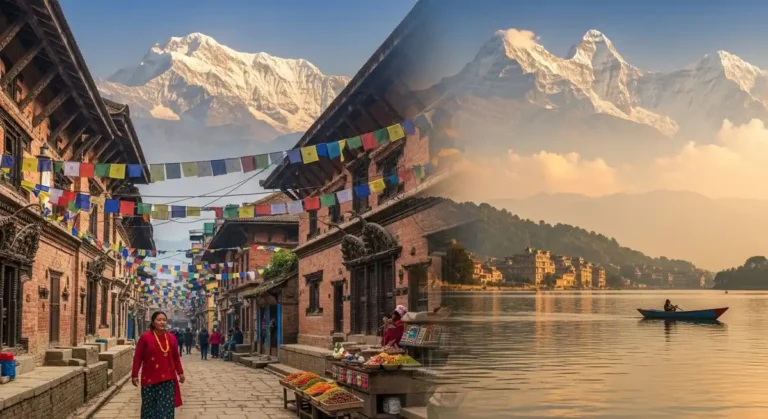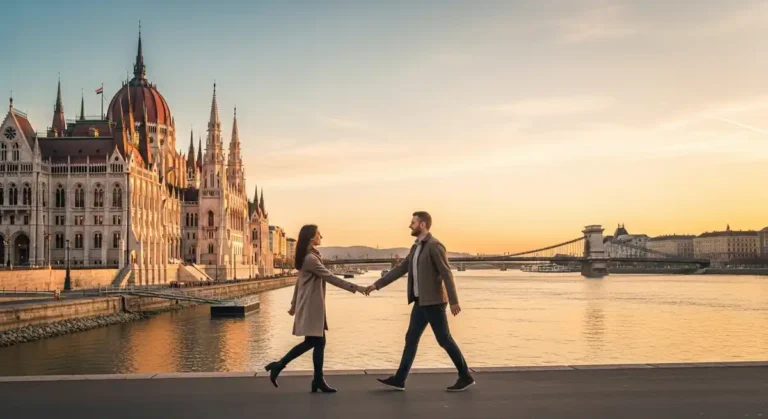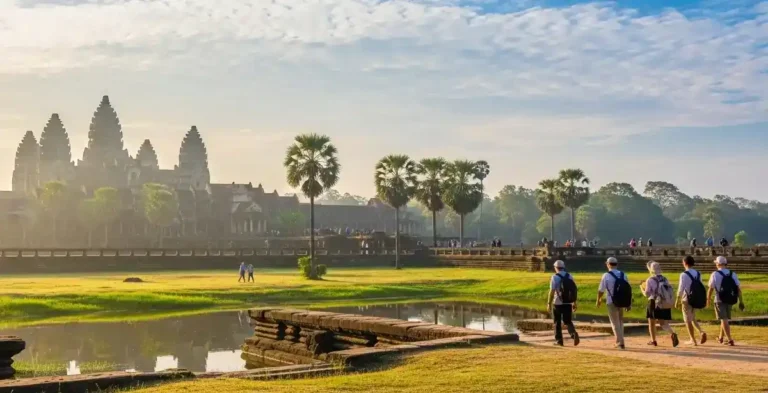Is the Philippines Safe in 2025? What Tourists Aren’t Being Told
Are travelers in danger? With fresh State Department warnings and the latest regional insights, here’s what’s really safe—and what’s off-limits in 2025.
With increased safety measures, friendly locals, and a Level 2 travel advisory encouraging normal precautions, most parts of the country remain welcoming and secure for all travelers, including solo and female tourists.
- Safe Tourist Areas: The Philippines is safe in 2025, especially in tourist hubs like Manila, Cebu, Palawan, Boracay, Bohol, and Davao.
- Travel Advisory Level 2: The U.S. travel advisory for the Philippines is at Level 2, meaning travelers should exercise normal precautions.
- Avoid High-Risk Regions: Avoid non-essential travel to Mindanao, Sulu Archipelago, and nearby areas due to security risks.
- Solo & Female Travelers: The country is safe for solo and female tourists, especially when sticking to popular and well-patrolled areas.
- Transportation Safety: Taxis and jeepneys are generally safe; use ride-hailing apps (e.g., Grab) and registered taxis for added safety.
- Entry Requirements: Travelers must have a valid passport (6+ months), return/onward ticket, and complete eTravel registration before arrival.
- Visa-Free Entry: Most tourists can enter visa-free for 30 days; ETA required for some nationalities starting 2025.
- COVID-19 Update: All COVID-19 restrictions lifted in 2025—no quarantine, no testing.
- Tap Water Advice: Drink bottled or purified water; tap water is safe in some cities but better filtered or boiled.
- Natural Disaster Awareness: Be prepared for typhoons, earthquakes, or volcanic activity by following local alerts.
- City-Specific Safety: Makati, BGC, and Cebu are highly recommended for expats and tourists due to strong security and modern infrastructure.
- General Safety Tips: Keep valuables secure, follow local guidance, use trusted transport, and register with your embassy.
The Philippines is offering a warm and vibrant experience for travelers from around the world.
Most tourist destinations across the country—such as Manila, Makati, BGC, Cebu, Palawan, Bohol, and Boracay—are secure, well-patrolled, and tourist-friendly.
Travelers are advised to take standard safety precautions, like safeguarding belongings in crowded areas and using reliable transportation options such as registered taxis or ride-hailing apps.
Areas popular for nightlife, including Poblacion and Makati, remain lively and safe with visible security presence and well-lit streets.
The official U.S. State Department travel advisory for the Philippines is at Level 2, which simply means travelers should exercise increased caution—common advice for many international destinations.
Tourists generally enjoy smooth, enjoyable visits across most islands without any major concerns.
To ensure a worry-free trip, it’s best to stay informed using local guidance, stick to well-known routes, and avoid remote regions not commonly visited by tourists.
The country continues to welcome millions of visitors yearly with its hospitality, beautiful landscapes, and rich cultural charm.
In 2025, the Philippines remains a safe, exciting, and rewarding destination for all kinds of travelers.
Philippines Travel Advisory and 2025 Safety Updates
Philippines Travel Advisory and 2025 Safety Updates confirm that the country is safe for tourists in 2025, with relaxed COVID-19 rules, essential travel registration via the eTravel portal, and increased precautions advised only in specific regions. Popular tourist areas remain safe and welcoming.
The Philippines welcomes travelers in 2025 with open arms. Most regions are considered safe, and key travel procedures are now easier.
With relaxed health restrictions and modern systems in place, visitors can enjoy a smooth and secure experience.
General Safety Overview
The overall advisory encourages travelers to exercise increased caution, which is a standard guideline for many destinations.
This means being aware of your surroundings, securing your belongings, and following local advice.
The majority of tourist areas—including Palawan, Boracay, Bohol, Manila, and Cebu—are safe and popular with international visitors.
Travel Requirements and eTravel Portal
All travelers are required to register their information on the eTravel portal before arriving or departing the Philippines. This quick step ensures a smooth immigration process and improves the country’s safety monitoring system.
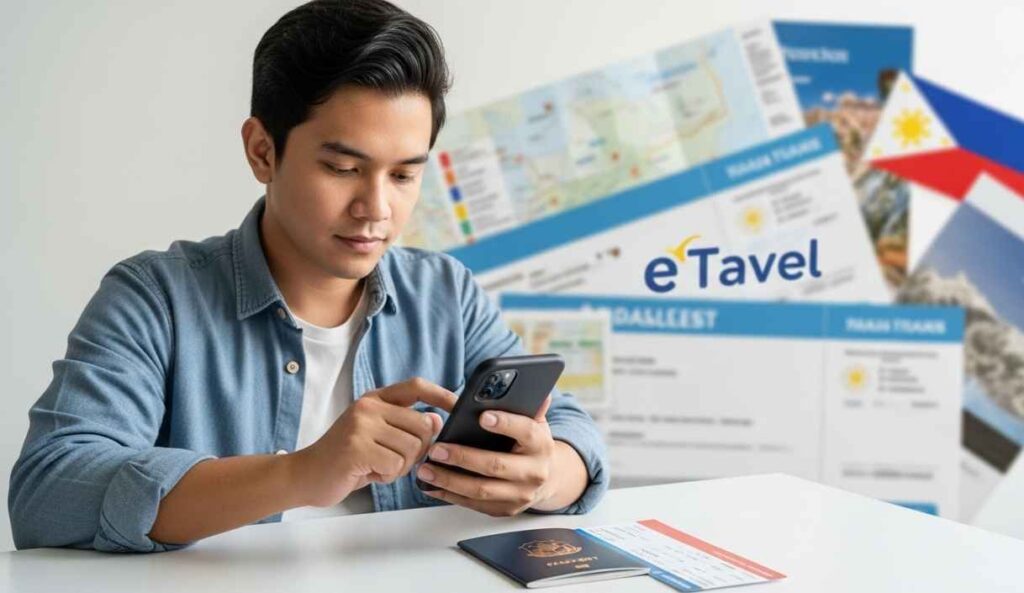
COVID-19 Updates
As of 2025, all COVID-19 restrictions have been lifted for international visitors. There are no quarantine or testing requirements, making travel easier and more convenient.
Flight and Airline Notices
Some Philippine Airlines flights may be adjusted based on regional or natural factors such as volcanic activity. Travelers are advised to check with their airline for any updates before flying.
Travel Tips for a Safe Trip
- Stay updated via official government sources.
- Be aware in crowded tourist areas.
- Use secure storage for valuables.
- Always carry valid travel documents.
Visa and Entry Info for Canadian and European Travelers
Starting January 8, 2025, non-European nationals will need an Electronic Travel Authorization (ETA) before entering the Philippines.
European citizens will follow from April 2, 2025. These steps streamline entry and enhance safety.
With its scenic landscapes, friendly locals, and modern safety systems, the Philippines in 2025 is a secure and enjoyable destination for travelers worldwide.
High-Risk vs Low-Risk Areas: Where Is It Safe to Go?
The Philippines offers many safe travel destinations, especially in the northern regions and popular tourist spots like Palawan, Davao, and Coron.
While some southern areas require extra caution, well-informed planning ensures a smooth and enjoyable trip.
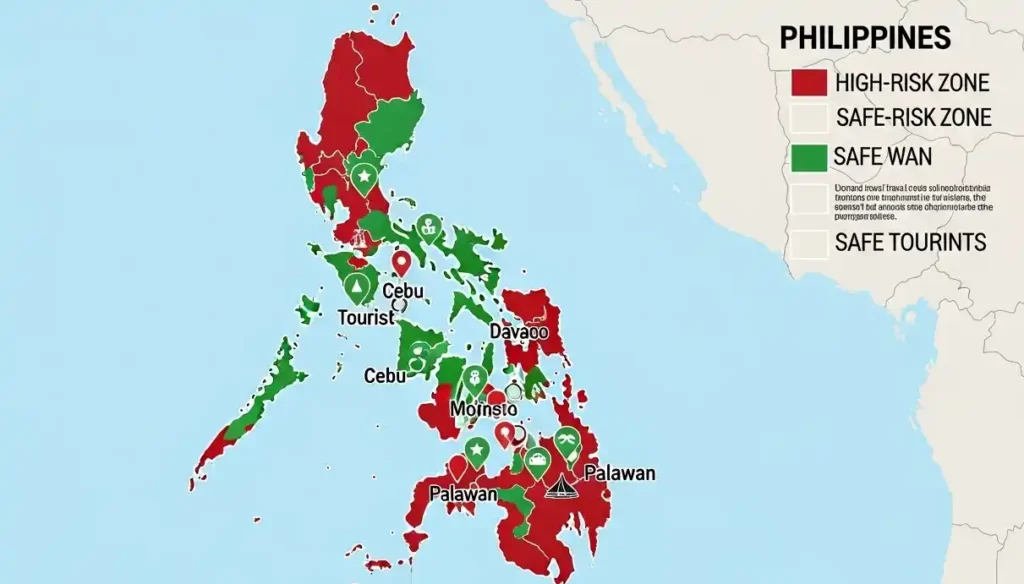
🟠 High-Risk Areas (Use Caution While Visiting)
The southern part of the Philippines, especially regions within Mindanao, requires careful planning for travelers.
Some parts like central, eastern, and western Mindanao, along with Sulu Archipelago and Jolo Province, are known for sensitive situations.
While tourism exists in these areas, travelers are advised to stay updated through official travel advisories and explore with guided support when needed.
Maritime routes such as those passing through the Sulu Sea may require additional attention, so travelers are encouraged to book through trusted providers and follow safety tips.
🟢 Low-Risk Areas (Recommended for Travel)
The northern Philippines is widely considered safe and welcoming for tourists. Cities and destinations like Manila, Davao, Palawan, Coron, Anilao, Verde Island, and Malapascua Island offer a relaxed and enriching travel experience.
Davao, for instance, is praised for its orderliness and safety standards. Palawan, often called a paradise island, is also a great destination for nature lovers.
Coastal spots like Coron and Malapascua Island are top picks for underwater adventures.
These locations are well-prepared for tourism and offer comfortable options for families, solo travelers, and couples alike.
🌐 General Travel Tips for a Safe Visit
- Stay informed by checking official travel advisories regularly.
- Plan your itinerary around well-known destinations and guided experiences.
- Remain aware of your surroundings, especially in crowded or unfamiliar places.
- Trust your instincts, and always prioritize your comfort and awareness during the trip.
By staying informed and choosing established tourist destinations, you can enjoy everything the Philippines has to offer with confidence.
City-Specific Safety: Is Manila Safe in 2025?
Is Manila Safe?
Yes, Manila is safe to visit in 2025, especially in well-developed areas like Makati and BGC, where security is strong and amenities are modern.
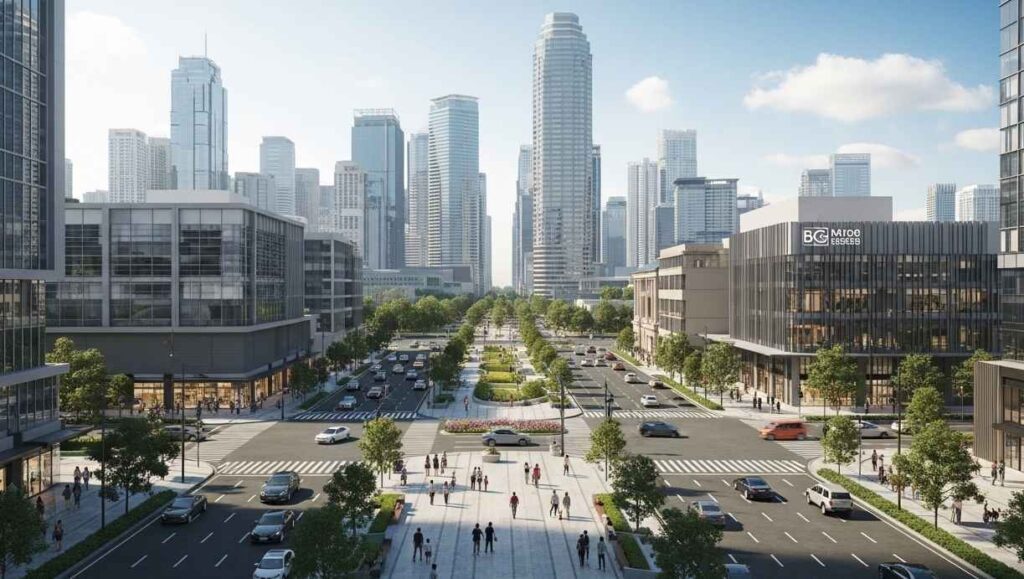
Tourists can enjoy the city comfortably by staying aware of their surroundings and choosing reputable locations.
Manila is safe in 2025 for tourists and foreign visitors.
The city has made great strides in improving security and infrastructure, particularly in popular areas like Makati and Bonifacio Global City (BGC).
These districts host numerous embassies, international organizations, and modern amenities, making them excellent choices for travelers.
Visitors enjoy Manila’s vibrant culture, warm hospitality, and exciting urban experiences.
Public transport, bars, and tourist spots are generally safe, especially during the day and in well-lit areas.
Simple travel habits like securing your belongings and staying in active, reputable places help ensure a worry-free trip.
Tourism continues to thrive in Manila, and with awareness and basic precautions, you can enjoy a memorable and safe experience in the capital city of the Philippines.
Is Manila Safe for Tourists and Expats?
Manila is a safe and welcoming destination for both tourists and expats, especially in well-developed areas like Makati and BGC.
By taking basic precautions, visitors can enjoy a secure and comfortable experience in the city.
Manila is a safe and enjoyable city for tourists and expats when exploring its well-developed neighborhoods such as Makati and Bonifacio Global City (BGC).
These areas are known for their modern infrastructure, vibrant communities, and a strong presence of fellow foreigners, making them ideal for both short visits and long-term stays.
Daily life in Manila is filled with friendly locals, convenient amenities, and plenty of cultural attractions.
Visitors often feel comfortable when practicing normal travel awareness, such as keeping an eye on personal belongings and staying aware in crowded areas.
With essential precautions and a mindful approach, most travelers find Manila to be a secure and rewarding destination.
Whether you’re visiting for leisure or relocating as an expat, the city offers a great mix of safety, hospitality, and urban lifestyle.
Is Manila Safe at Night?
Manila is safe at night in well-lit, popular areas such as Makati and Bonifacio Global City, where many expats live and amenities are abundant.
Staying alert, sticking to main roads, and avoiding secluded spots ensures a comfortable and enjoyable nighttime experience in the city.
Manila is safe at night, especially in vibrant and well-developed districts like Makati, Bonifacio Global City (BGC), and Pasay.
These areas are known for their modern infrastructure, active nightlife, and strong presence of security, making them ideal places for tourists and expats to explore after dark.
The city remains active late into the night due to its dynamic urban culture.
Many locals work non-traditional hours aligned with international time zones, so you’ll find streets lively even during late or early hours.
This adds to the sense of energy and safety in Metro Manila’s central areas.
While enjoying the city’s nightlife—restaurants, bars, and entertainment venues—it’s wise to stay in well-lit places and use common sense precautions, such as walking in groups and watching your belongings.
Popular areas rarely feel deserted, thanks to the city’s high density and round-the-clock activity.
Manila offers a vibrant and engaging atmosphere at night, making it a great city to enjoy safely when you stay aware and stick to familiar areas.
What is the Most Common Crime in Manila?
The most common crime in Manila is petty theft, particularly pickpocketing and minor property-related incidents, usually occurring in crowded public areas like transport hubs and markets.
The most common crime in Manila is petty theft, including pickpocketing and small-scale property offenses.
These are typically non-violent and happen in busy places where people may be less aware of their belongings, such as on public transportation or in popular tourist areas.
Law enforcement continues to take proactive steps to ensure public safety.
Areas like Makati, BGC (Bonifacio Global City), and Pasay are known for being well-patrolled and tourist-friendly, contributing to a generally safe experience for visitors.
Public awareness campaigns and security presence in transit systems and key locations further help reduce the occurrence of such incidents.
By staying alert in crowded places and taking basic precautions, most travelers enjoy a smooth and safe visit to Manila.
Is Manila Safe for Female Travelers & Americans?
Manila is generally safe for female travelers and Americans, especially in well-developed areas like Makati and BGC.
By staying aware, using reputable transportation, and taking common-sense precautions, visitors can enjoy a comfortable and rewarding experience in the city.
Manila is a vibrant city that welcomes millions of international visitors each year, including solo female travelers and Americans.
Most enjoy their stay safely, especially when choosing safe and modern districts such as Makati and Bonifacio Global City (BGC), known for being clean, well-lit, and traveler-friendly.
Taking basic safety precautions—like securing your belongings in public transport, avoiding isolated areas at night, and using trusted taxis or ride-hailing apps—can significantly enhance your comfort and peace of mind.
Public places, restaurants, shopping malls, and tourist attractions are generally secure and patrolled.
Many solo female travelers report positive experiences exploring Manila’s rich culture, historic landmarks, and warm hospitality.
Learning a few basic Tagalog phrases and informing someone of your itinerary can add another layer of security.
Travelers are encouraged to research common scams and stay alert, just as they would in any major city around the world.
Staying in popular accommodations and moving around in groups or with a local guide can further boost confidence while exploring.
With awareness and preparation, Manila offers an enjoyable and culturally enriching trip for both women and American travelers.
Safety by Type of Traveler
Is the Philippines Safe for Solo Travelers?
The Philippines is safe for solo travelers, especially those who plan ahead, stay in popular tourist areas, and follow common-sense travel precautions.
With its welcoming locals, stunning islands, and well-traveled routes, solo adventurers can enjoy a rewarding and memorable experience across the country.
The Philippines is a wonderful destination for solo travelers, offering vibrant culture, scenic beaches, and friendly locals.
Travelers who plan their routes, stay informed, and respect local customs will find it safe and enjoyable to explore.
Most popular areas like Palawan, Boracay, Cebu, and Siargao are well-traveled and tourist-friendly.
These destinations offer everything from serene beaches to exciting nightlife and adventure activities.
Staying in well-lit, central accommodations, using licensed transportation, and connecting with other travelers through tours or hostels enhances both safety and the travel experience.
Carrying a money belt, staying updated via local news, and learning basic local phrases helps solo travelers feel more confident and prepared.
Avoiding overly isolated areas at night and being aware of surroundings is part of smart travel anywhere in the world.
Whether you’re surfing in Siargao, relaxing on the shores of El Nido, or enjoying city life in Cebu, the Philippines offers a solo journey filled with discovery, culture, and unforgettable memories.
Is the Philippines Safe for Female Travelers?
The Philippines is safe for female travelers, offering a welcoming environment, friendly locals, and well-developed tourist areas.
With basic precautions and cultural awareness, solo female travelers can enjoy a secure and rewarding experience.
The Philippines is safe for female travelers and offers a wonderful mix of natural beauty, cultural richness, and warm hospitality.
From its picturesque beaches and scenic islands to its vibrant cities, the country welcomes solo female travelers with open arms and genuine friendliness.
Most tourist destinations in the Philippines are well-patrolled, with visible security in urban areas like Manila and Cebu.
Public spaces are managed efficiently, and locals are known for their respectful and helpful nature.
Communication is easy, as English is widely spoken, allowing travelers to feel more confident and connected.
Travelers benefit from understanding and respecting local customs, which adds depth to the overall experience.
Using trusted transportation services such as ride-sharing apps or registered taxis, especially during evenings, ensures a smooth journey.
Thorough research and a clear itinerary enhance personal safety and comfort.
It’s smart to carry minimal valuables, keep essentials secure, and stay informed about the areas you plan to visit.
Trusting your instincts and staying aware of your surroundings goes a long way in any destination.
With its warm hospitality, natural wonders, and travel-friendly environment, the Philippines offers solo female travelers a safe, enriching, and unforgettable adventure.
Is the Philippines Safe for Families with Kids?
The Philippines is a safe and welcoming destination for families with kids, offering family-friendly attractions, beautiful islands, and warm hospitality.
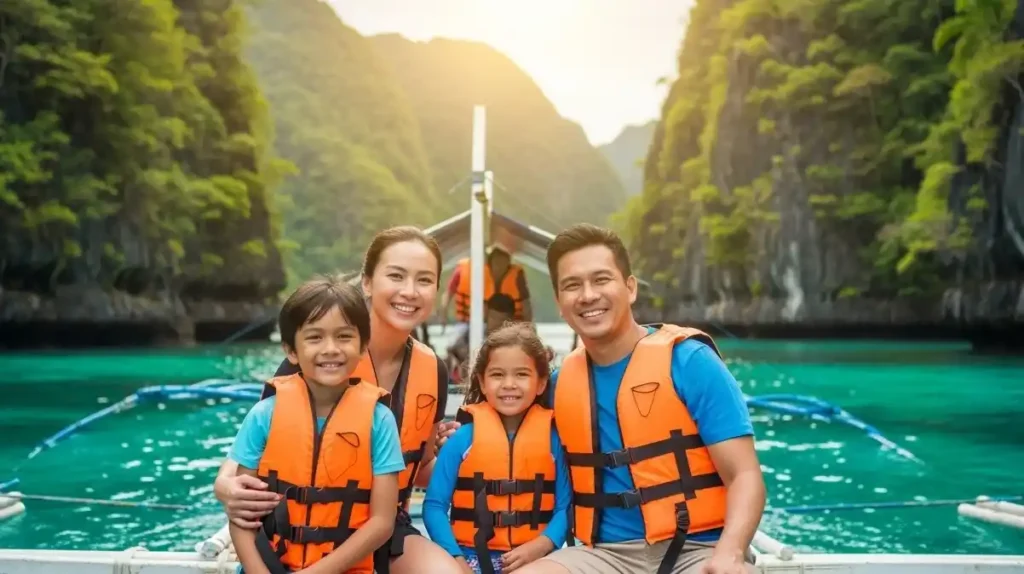
With proper planning and awareness, families can enjoy a memorable and secure vacation across the country.
The Philippines is a fantastic destination for families traveling with kids.
Known for its hospitality and family-oriented culture, the country offers plenty of safe and enjoyable experiences.
Popular destinations such as Boracay, Palawan, Cebu, and Bohol are well-developed, with clean beaches, organized tours, and a variety of kid-friendly activities including island hopping, snorkeling, and visits to interactive museums.
Many tourist areas have good infrastructure and are accustomed to hosting families.
Filipino locals are famously warm and friendly, often going out of their way to make visitors feel welcome.
This makes traveling with children not only easy but also deeply enjoyable.
To ensure a smooth trip, it’s wise to plan ahead.
Choose trusted accommodations that cater to families, book tours through reliable operators, and pack essentials like insect repellent, reef shoes, and basic medications.
Road travel is common, but domestic flights and ferries are also widely used when exploring different islands.
While exploring busy areas like Manila or transport hubs, staying aware of your surroundings is enough to stay safe.
Family travelers can feel confident as long as they stay informed, take standard travel precautions, and enjoy the wide range of cultural and natural experiences the Philippines has to offer.
With its natural beauty, welcoming people, and wide range of attractions, the Philippines makes for a rewarding and secure vacation spot for families with children.
Is Philippines Safe from Earthquake
Yes, the Philippines is safe to visit and live in with the right precautions. While it is located in a seismically active region, strong infrastructure, preparedness, and continuous safety efforts help reduce risks from earthquakes.
The Philippines is part of the Ring of Fire, an active area where volcanic and seismic activity is frequent. However, this doesn’t mean it’s unsafe. Through thoughtful planning, strong building codes, and improved infrastructure, the country has taken major steps to improve safety and preparedness.
Many projects focus on retrofitting older buildings to withstand earthquake shaking. New construction follows modern design methods to match the local hazard level. These efforts help protect both residents and visitors, making everyday life in the country safe and resilient.
The impact of earthquakes is now better managed through detailed information, smart decisions, and quick response services. Emergency teams are trained, and public awareness campaigns teach people the right precautions. In essential areas, like schools and hospitals, project teams use available data to adequately assess the potential risk and respond with care.
Living in the Philippines means living with nature’s power, but also with human experience, smart planning, and community efforts that prioritize well-being and safety.
Is the Philippines Safe for Expats or Long-Term Stays?
The Philippines is safe for expats and long-term stays with proper planning, awareness, and respect for local customs.
Many expats enjoy the welcoming culture, affordable living, and vibrant lifestyle the country offers.
The Philippines is safe for expats or long-term stays when approached with mindfulness and preparation.
Many expats choose to live in the Philippines because of its warm climate, low cost of living, and friendly communities.
Cities like Manila, Cebu, and Davao offer modern amenities, international schools, and healthcare facilities that support a comfortable lifestyle.
While adapting to any new country comes with adjustments, expats can thrive by staying informed and aware of their surroundings.
Popular ride-hailing services such as Grab make daily travel more secure and convenient.
Residential communities with on-site security provide added peace of mind.
Learning basic Tagalog, the local language, not only helps in daily interactions but also builds stronger community connections.
Staying updated with local news and following embassy guidelines ensures a smooth experience.
The Philippines has a lively culture, beautiful beaches, and a welcoming atmosphere that attracts long-term residents from around the world.
With the right mindset and precautions, it offers a safe and rewarding environment for expats.
Living in the Philippines As a Foreigner
Living in the Philippines as a foreigner offers a vibrant and rewarding experience filled with cultural richness, warm communities, and a low cost of living. With English widely spoken, diverse food options, and friendly locals, adapting to daily life becomes an enjoyable journey for those open to embracing local customs and traditions.
Warm Culture and Friendly Locals
The Philippines is known for its welcoming people and strong sense of community. As a foreigner, you’ll feel at home quickly. Locals are kind and respectful, making social interactions pleasant and natural. Understanding customs, etiquette, and traditions helps build meaningful connections. Showing respect for religious beliefs and social norms is appreciated and often returned with warmth.
Easy Communication and Language
English is spoken almost everywhere, which makes everyday communication smooth. Learning a bit of basic Tagalog or other local languages adds a personal touch to your conversations. It helps with adapting to daily life and shows appreciation for the local culture.
Affordable Living and Transportation
The cost of living is relatively low, especially compared to Western countries. From Filipino dishes to local markets, enjoying life here is both rewarding and budget-friendly. Getting around is simple with jeepneys, buses, and taxis—all part of the public transportation system in urban areas. The infrastructure continues to improve, offering better roads, utilities, and city access.
Food, Lifestyle, and Healthcare
Food lovers will enjoy the eating habits and new flavors found in traditional Filipino dishes. Life in the Philippines offers a relaxed pace with vibrant daily scenes. Healthcare services are accessible in many medical facilities, and there are good insurance options available to keep your health protected.
Embracing the Experience
Moving here brings many unique experiences. The journey is filled with understanding, preparation, and cultural nuances. With a spirit of embracing and awareness, living in this beautiful country becomes more than just a change—it becomes a truly fulfilling life chapter.
Transportation Safety in the Philippines
Are Taxis and Jeepneys Safe?
Taxis and jeepneys are generally safe in the Philippines when used wisely.
Travelers can enjoy convenient and affordable rides by using official taxi apps, staying alert, and following simple safety tips.
Taxis and jeepneys in the Philippines are commonly used forms of transportation and can be safe for both locals and tourists.
Taxis, especially when booked through reliable ride-hailing apps like Grab, JoyRide, Angkas, or Move It, provide a secure and efficient way to travel across cities.
Many drivers are courteous, and services are improving continuously.
Travelers are encouraged to choose pre-booked taxi services via hotel transfers or airport counters.
These options ensure a smoother experience, particularly when arriving at airports or traveling during the evening.
Being aware of your route and surroundings is always a good practice, as it enhances comfort and confidence during the journey.
Jeepneys, the iconic and budget-friendly transport option, are widely used and loved by locals.
Modern jeepneys are now being introduced, featuring improved safety, better seating, and eco-friendly standards.
While onboard, keeping your belongings close and remaining aware of your environment helps you travel confidently.
Thousands of people rely on these transportation methods daily.
Whether solo or in a group, you can enjoy the unique travel experience that taxis and jeepneys offer by staying alert and making smart choices.
Grab and Ride-Sharing Apps
Grab and ride-sharing apps in the Philippines offer safe, reliable, and convenient transportation options across major cities, including services like GrabTaxi, GrabCar, JoyRide, and Angkas, with added features such as food and package delivery, cashless payments, and loyalty rewards.
Grab and other ride-sharing apps in the Philippines have transformed urban travel by providing easy-to-use, on-demand services.
Grab is the leading platform, offering ride-hailing through GrabTaxi (for regular taxis), GrabCar (for private vehicles), and GrabHitch (for carpooling).
It also includes GrabFood for food delivery, GrabExpress for parcels, and GrabPay for seamless digital transactions.
Commuters benefit from additional features like GrabRewards, which allow users to earn points with every transaction.
Services continue to expand through GrabShare, reaching more cities beyond Metro Manila.
Aside from Grab, options like JoyRide and Angkas focus on motorcycle taxi services, known for quick trips and affordable fares.
Owto provides sedan rides through TNVS in Metro Manila, Bulacan, Rizal, and Cavite.
Apps like inDrive and Rida offer flexible pricing, while Bykea covers both rides and deliveries.
With user-friendly apps, multiple transport choices, and expanding coverage, ride-sharing in the Philippines is a trusted and smart way to get around.
Domestic Flights and Ferries
Domestic flights and ferries in the Philippines provide reliable, affordable, and convenient options to travel between islands, with multiple airlines and ferry companies offering regular routes across the country.
Domestic flights and ferries in the Philippines make island-hopping easy and efficient.
Several major airlines, including Cebu Pacific, Philippine Airlines, and Philippines AirAsia, operate frequent domestic routes connecting major cities and tourist destinations.
Travelers can also choose from other carriers such as PAL Express, AirSWIFT, Cebgo, and Sunlight Air to explore more locations.
Booking flights is simple through airline websites or online travel platforms, and a valid ID or passport is usually required for boarding.
For sea travel, ferry services provide a scenic and practical alternative.
Companies like 2GO Travel and Montenegro Lines run routes across the archipelago using different types of vessels, such as RoRo (roll-on/roll-off), Fast Crafts, and Passenger Ferries.
These ferries offer various levels of comfort and connect key islands like Luzon, Visayas, and Mindanao.
Popular routes include Batangas to Caticlan, Odiongan, Roxas City, and Cebu City.
Ferry tickets are easily available online, and checking schedules in advance ensures smooth planning, especially during peak seasons.
Road Conditions and Traffic Tips
Road conditions in the Philippines are manageable with proper planning and awareness.
Travelers can enjoy smooth journeys by using traffic apps, practicing defensive driving, and staying informed about peak hours and local rules.
Urban areas are well-connected, and multiple transportation options support convenient travel.
Road conditions and traffic in the Philippines are well-navigated with a few smart strategies.
Urban centers such as Manila offer a network of main roads, and while they can be busy, using real-time traffic apps like Waze and Google Maps helps travelers avoid congested routes and reach their destinations efficiently.
Familiarizing yourself with local driving etiquette and following road safety tips makes travel smoother.
Practicing defensive driving—such as keeping a safe distance, signaling early, and being alert to surroundings—ensures a more comfortable driving experience.
Roads vary across regions, and it’s helpful to stay aware of updates related to roadworks or diversions.
Most intersections operate with flexible right-of-way norms, so staying cautious enhances safety and flow.
Pedestrians, cyclists, tricycles, and motorcycles are common on the roads.
Respecting their space and yielding appropriately contributes to an orderly traffic environment.
At night, maintaining a steady pace and using headlights wisely improves visibility and safety.
Public transport options like MRT, LRT, and P2P buses are excellent alternatives, especially during high-traffic periods.
Carpooling and ridesharing also offer reliable and eco-friendly travel, with access to carpool lanes in some areas.
Overall, staying informed through local news and traffic advisories, and planning your journey in advance, helps you enjoy a hassle-free and efficient travel experience throughout the Philippines.
Can You Drink Tap Water in the Philippines?
You can drink tap water in the Philippines if it has been properly filtered or boiled.
In major cities like Manila, water meets safety standards, but using bottled or purified water is generally recommended for peace of mind and health safety.
Tap water in the Philippines is treated in many urban areas like Metro Manila to meet international safety standards.
However, to ensure safe drinking, it’s best to boil or filter the water before consumption, especially if you’re staying in older buildings where pipe conditions may vary.
Many locals and travelers prefer using bottled water or refillable water jars, which are commonly available and delivered to households and accommodations.
These large 5-gallon water containers are an eco-friendly and reliable way to access clean drinking water.
To reduce plastic waste, consider carrying a refillable bottle.
Most hotels, guesthouses, and apartments offer purified water dispensers or jars, making it easy to refill as needed.
While the infrastructure in many cities is improving, opting for filtered, boiled, or bottled water remains the best choice for consistent hydration safety.
Natural Disasters and Climate Risks
Natural disasters and climate risks in the Philippines include seasonal typhoons, occasional earthquakes, volcanic activity, and weather-related events such as flooding and landslides.
By staying informed, following local advice, and planning ahead, travelers can enjoy a safe and rewarding experience throughout the country.
The Philippines is a geographically diverse country where natural elements like typhoons, earthquakes, and volcanic activity can occur.
Located in the Pacific Ring of Fire and the typhoon belt, the country experiences regular weather and geological phenomena, most of which are predictable with today’s advanced warning systems.
Travelers can expect well-prepared local systems and reliable information from sources such as PAGASA (Philippine Atmospheric, Geophysical and Astronomical Services Administration) and travel.gc.ca.
These platforms provide real-time updates on weather conditions and travel advisories, helping visitors stay prepared.
Seasonal typhoons typically occur between June and December, with many regions built to manage heavy rainfall.
Some areas may occasionally experience flooding or landslides, but these are generally localized and manageable with awareness and planning.
Travelers interested in outdoor adventures or coastal destinations should stay updated on tide conditions and choose safe swimming zones.
While earthquakes and volcanic eruptions are part of the country’s natural landscape, they are monitored closely by local authorities, ensuring public safety.
To enhance your trip, pack for varying weather, stay informed, respect local guidelines, and consider travel insurance that includes weather-related adjustments.
With the right preparation, you can explore the natural beauty of the Philippines safely and confidently.
Safety at Night in the Philippines
The Philippines offers safe and enjoyable nighttime experiences, especially in well-lit, popular areas like Makati and BGC.
Urban centers provide vibrant nightlife options, while rural areas offer peaceful, community-centered evenings.
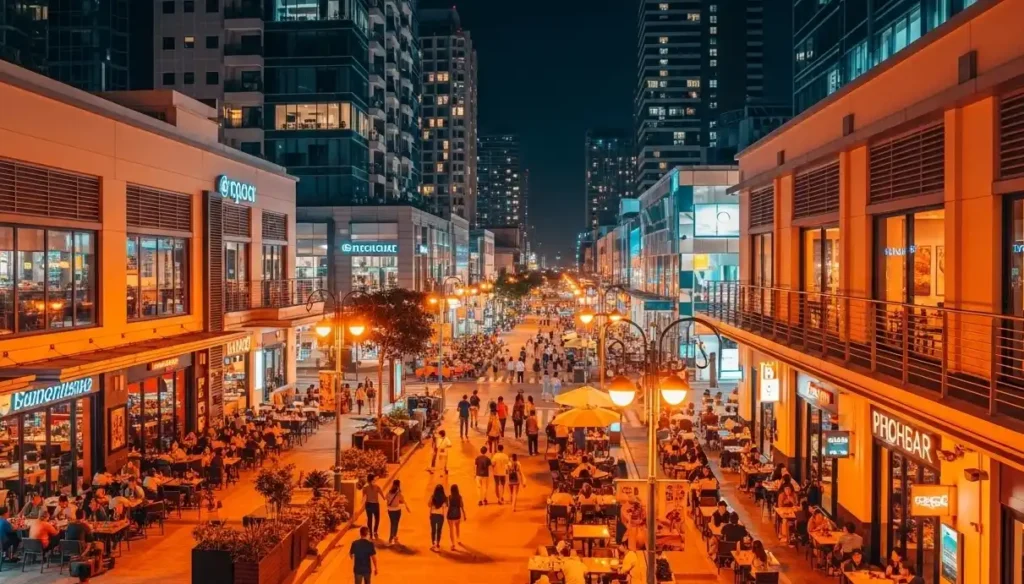
Staying alert, using trusted transportation, and sticking to populated zones ensures a secure experience for travelers after dark.
Makati and Bonifacio Global City (BGC) in Manila are among the safest and most vibrant areas for nighttime outings.
These neighborhoods are popular with both locals and expats and offer numerous bars, restaurants, and cultural venues.
Staying within well-lit and populated zones, especially if your accommodation is nearby, ensures a smooth and secure evening.
Urban areas in the Philippines are known for their diverse nightlife—from rooftop bars and live music to cultural shows and food adventures.
These areas also offer convenience with amenities, transportation, and entertainment.
While the pace may be faster, travelers can enjoy these spaces with ease by remaining aware of their surroundings and choosing trusted travel methods like Grab or licensed taxis.
Rural areas offer a different kind of nighttime charm.
Evenings tend to wind down earlier, with families socializing and communities enjoying a relaxed, peaceful atmosphere.
The strong sense of togetherness and familiarity in these regions adds to the comfort and safety of staying in the countryside.
Travelers are encouraged to stay in groups when exploring at night, avoid unfamiliar routes, and keep their belongings secure.
Trustworthy transport options and local guidance enhance the overall safety.
In all areas, staying aware and informed ensures a safe and memorable nighttime experience in the Philippines.
How to Stay Safe While Traveling in the Philippines?
Keep your valuables secure, register with your embassy, carry travel insurance, stay informed about your surroundings and local advisories, use trusted transportation, and follow basic health and safety practices.
Traveling in the Philippines is enjoyable and safe when you take a few smart precautions.
Begin by keeping your valuables and documents secure.
Carry a copy of your passport during the day, and store the original in a safe place at your accommodation.
Registering your trip with your embassy and saving their contact details—especially for the consulate in Manila—can offer peace of mind.
In case you need any assistance, help will be easy to access.
Travel insurance is a wise investment. It provides support for lost items, medical needs, and any travel disruptions.
Companies like SafetyWing offer affordable global coverage ideal for travelers.
Stay alert and aware of your surroundings, especially in busy areas or when using public transportation.
Use ride-sharing apps or reputable taxi services, and avoid walking in poorly lit or isolated locations at night.
To stay healthy, drink bottled or purified water and enjoy food that’s well-cooked and served hot.
Using insect repellent helps prevent mosquito bites, which can transmit diseases.
Practice regular handwashing and carry sanitizer to maintain hygiene.
Learn a few basic Tagalog phrases to connect with locals and enhance your travel experience.
Stay updated on local advisories, prepare for seasonal changes like typhoons, and always have a simple plan in place for any unexpected weather conditions.
With a bit of preparation, you can fully enjoy the beauty, hospitality, and adventure the Philippines offers—safely and confidently.
Is It Safe to Live in the Philippines
Yes, it is safe to live in the Philippines, especially in well-developed cities like Makati, BGC, Cebu, and Davao.
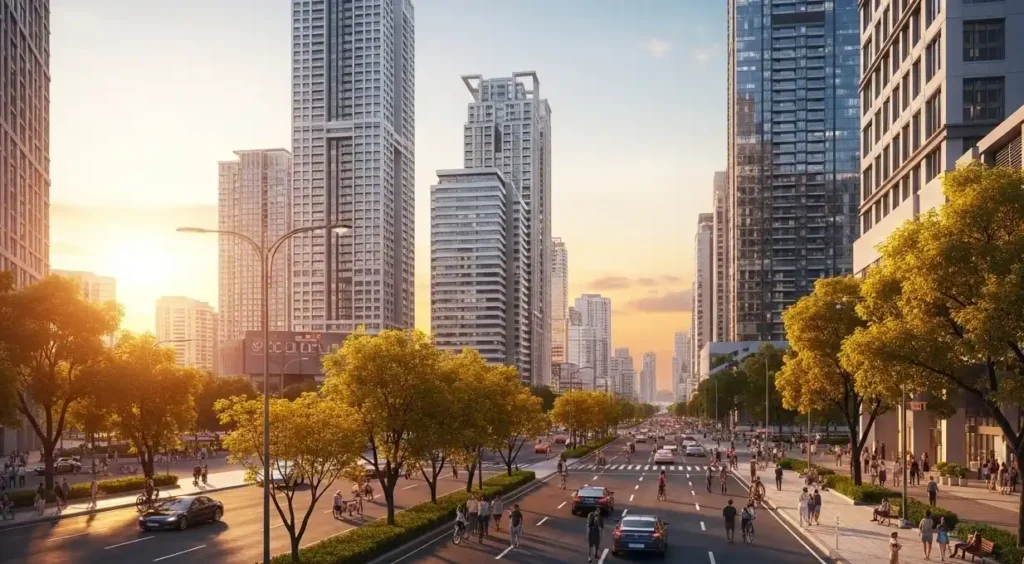
With proper precautions, awareness, and choosing secure areas, expats can enjoy a comfortable and secure lifestyle.
The Philippines is absolutely safe to live especially when you choose well-developed and secure areas.
Many expats live comfortably in cities like Makati, Bonifacio Global City (BGC), Cebu City, Davao, Iloilo, and Bacolod, where modern infrastructure, reliable amenities, and strong security are available.
These cities often host embassies, INGOs, and a large community of foreigners.
In general, the safest neighborhoods are well-planned and have low crime rates.
Researching locations and staying informed through government travel advisories helps you make confident decisions.
Good accommodations with safety features and living near expat-friendly zones enhance peace of mind.
Staying aware of your surroundings, especially in crowded places or while commuting, is important for everyday safety.
Choose reputable ride-sharing services or licensed taxis when getting around.
Keeping valuables secure and following local customs and laws supports a smooth living experience.
The Philippines has systems in place for handling natural events like typhoons or earthquakes, and most residents and expats are well-prepared through regular awareness programs and guidance.
With the right mindset and simple safety habits, living in the Philippines offers not just safety, but also a vibrant lifestyle surrounded by friendly people, tropical beauty, and diverse cultural experiences.
Where Not to Go in the Philippines
Travelers are encouraged to avoid non-essential trips to select regions in Mindanao, including the Sulu Archipelago and parts of the Zamboanga Peninsula, due to limited access and security operations.
Instead, explore the many safe and beautiful destinations the Philippines has to offer, such as Davao City, Siargao, and Dinagat Islands.
Many parts of the Philippines are safe and welcoming, but there are a few regions where travel is better postponed.
Certain areas in central and western Mindanao, including the Sulu Archipelago and the Sulu Sea, are currently under heightened security measures.
These places may have limited infrastructure or ongoing peacekeeping efforts, making them less ideal for tourism.
Provinces such as Basilan, Sulu, Tawi-Tawi, Lanao del Sur, Cotabato, and Zamboanga Sibugay are known for active development and security presence.
While progress continues, it’s recommended to prioritize more accessible destinations.
Travelers are advised to stay updated through official travel advisories, especially when visiting regions like Eastern Mindanao, where only essential travel is suggested.
Staying informed and choosing well-connected locations helps ensure a smooth and enjoyable trip.
The Philippines offers countless safe and breathtaking locations.
Popular and peaceful areas like Davao City, Davao del Norte, Siargao Island, and the Dinagat Islands provide great experiences with excellent infrastructure and tourist services.
With a little planning, your journey through the Philippines can be both exciting and worry-free.
Travel Ban Philippines Update
There are no travel bans in effect for the Philippines.
Travelers are welcome, with standard entry requirements such as vaccination records, possible COVID-19 testing, and registration through the eTravel portal.
The Philippines remains open for international travel, with no blanket or nationwide travel restrictions currently in place.
While pandemic-related limitations have been eased, it’s still important to stay informed about health and safety protocols, including any region-specific recommendations.
Visitors should ensure they meet all entry requirements, such as proof of vaccination and, if applicable, negative COVID-19 tests.
Registering with the eTravel portal prior to arrival helps streamline the process and ensures compliance with travel guidelines.
Some regions, like parts of Mindanao, may require a bit more awareness due to security considerations.
However, most destinations across the country are welcoming and safe for tourism.
Always check the latest advisories before travel to ensure a smooth journey.
Is the Philippines Safe for American Tourists
The Philippines is generally safe for American tourists, especially in popular tourist areas and major cities like Manila.
By staying informed, following local advice, and taking standard safety precautions, travelers can enjoy a secure and memorable visit.
The Philippines welcomes American tourists with warmth and hospitality.
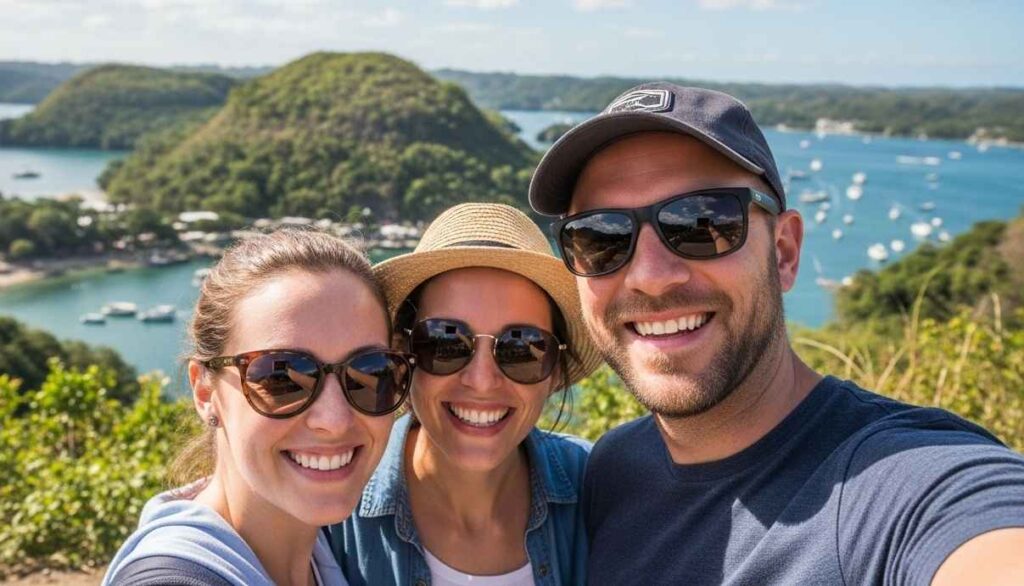
Cities like Manila, Cebu, and Davao are popular and considered safe for international visitors.
Tourist spots are well-patrolled, and most travelers experience no major safety concerns during their stay.
As with any international destination, staying vigilant and aware of your surroundings helps ensure a smooth trip.
Avoiding isolated areas at night, securing personal belongings, and using reputable transportation services are basic practices that keep you safe.
Local authorities are supportive, and guidance from the U.S.
Department of State encourages increased awareness, not avoidance.
Most safety notices are precautionary and aim to help travelers stay updated and prepared—not to discourage visits.
American tourists who plan their trip wisely, stay informed through local media, and respect local customs will find the Philippines a rewarding and safe destination to explore.
Philippines Travel Advisory Today
Philippines travel advisory today recommends exercising increased caution in some regions while highlighting that most popular tourist destinations like Palawan, Boracay, Bohol, Manila, and Cebu remain safe and welcoming for travelers.
The Philippines continues to be a vibrant and welcoming destination for travelers.
While it’s advised to stay alert and informed, most of the country, especially its top tourist spots, is safe to explore.
Locations such as Palawan, Boracay, Bohol, Manila, and Cebu are among the most visited and offer memorable experiences with proper safety awareness.
Travelers are encouraged to stay connected with local news and follow guidance from hotels or tour organizers.
Staying aware of your surroundings, especially in crowded areas like public transport, airports, and markets, helps ensure a smooth journey.
The current advisory level is Level 2, which simply suggests taking standard precautions.
Monitoring updates from local authorities and avoiding large public gatherings helps enhance personal safety while enjoying your trip.
With friendly locals, beautiful landscapes, and a rich cultural heritage, the Philippines remains a great choice for both first-time and returning travelers.
Philippines Travel Requirements
Philippines travel requirements include a valid passport (with at least six months’ validity), a return or onward ticket, and mandatory eTravel registration within 72 hours before arrival.
Most tourists can enter visa-free for up to 30 days, and there are no COVID-19 restrictions.
Additional documents may be required based on your nationality and purpose of visit.
Traveling to the Philippines is straightforward when you meet the essential entry criteria.
These requirements help ensure a smooth and safe experience for all international travelers.
Key Entry Requirements
- Valid Passport: Your passport must be valid for at least six months beyond your planned stay.
- Return or Onward Ticket: Required as proof of departure from the Philippines within the allowed stay period.
- eTravel Registration: All travelers must complete eTravel registration (free of charge) within 72 hours before arriving. This replaces the old paper arrival and customs forms.
- Visa-Free Entry: Many nationalities can enter the Philippines visa-free for up to 30 days for tourism or business.
- Visa Extensions: If you wish to stay longer, visa extensions are available from Philippine immigration.
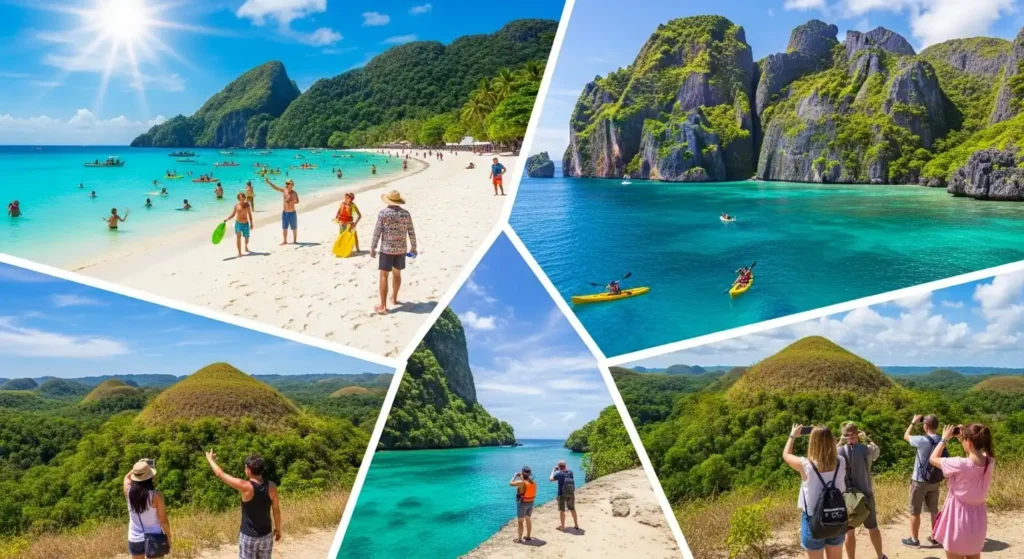
Health and Safety Protocols
- COVID-19 Measures: All COVID-19 restrictions have been lifted. No quarantine, testing, or vaccination proof is required. However, temperature checks may still be conducted at entry points.
- Recommended Vaccinations: It’s advised to stay up to date on routine immunizations such as measles, mumps, rubella, diphtheria, tetanus, whooping cough, chickenpox, polio, and influenza.
- Special Vaccination Requirements: Yellow fever or polio vaccination may be necessary if arriving from certain countries.
Financial and Supporting Documents
- Proof of Funds: Immigration officers may request proof of sufficient financial capacity to support your stay.
- Additional Documents: Depending on your travel purpose, you may need a hotel booking, employment letter, or a letter of invitation.
Passport and Legal Document Guidelines
- British Travelers: If you’re traveling on a British citizen passport, ensure it’s valid and check any additional document requirements through the Philippine Embassy in the UK.
- Lost or Reported Passports: Always travel with a valid passport and check its status in advance to avoid any issues.
Customs and Currency Declarations
- Customs Rules: Declare items that may be restricted or taxed.
- Currency Limits: You may bring in up to ₱50,000. For foreign currency over USD 10,000, declare it upon arrival.
Exit Requirements
- Emigration Clearance Certificate (ECC): Required if staying over six months on a tourist visa.
- Travel Pass: If your visa was issued by the DoJ, BoI, or PEZA, a travel pass may be required for departure.
With simple preparation and the right documents, traveling to the Philippines is easy and welcoming for tourists from around the world.
Philippines Immigration Requirements for Tourist
Philippines immigration requirements for tourists include a valid passport with at least six months’ validity, a return or onward ticket, and eTravel registration before arrival.
Depending on the length of stay and nationality, a tourist visa or visa-free entry may apply.
Tourists planning a visit to the Philippines must meet simple and clear entry requirements.
Most travelers from visa-free countries can enter without a tourist visa for up to 30 days.
However, all visitors must have a valid passport with at least six months validity beyond their intended stay.
A return ticket or onward ticket to the next destination is also mandatory.
For Visa-Free Entry (30 Days or Less)
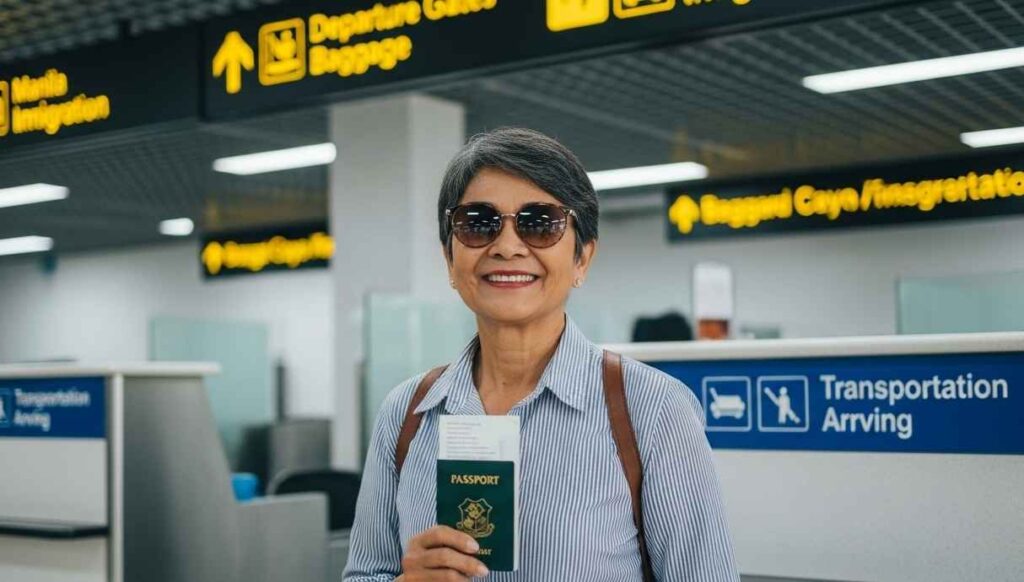
- Passport valid for at least 6 months
- Confirmed return or onward journey ticket
- eTravel registration completed within 72 hours before arrival
Tourists from eligible countries can enjoy short visits without the need for a visa. Just ensure your travel documents and ticket details are in order.
For Tourist Visa (If Staying More Than 30 Days or Not Visa-Free)
Visitors who are not from visa-free countries or plan to stay longer need to apply for a tourist visa. Required documents include:
- Visa application form (duly filled)
- Passport-sized photographs
- Proof of tourist status (e.g., travel itinerary, hotel booking confirmation, travel agency letter)
- Round-trip ticket
- Financial documents: bank statements, income tax returns, or proof of financial capacity
- Police clearance or medical certificate if requested
- Visa fee, based on visa duration
- Choose between single-entry visa and multiple-entry visa with different validity periods
Where to Apply and Extend
- Submit your application at the Philippine embassy or Philippine consulate in your country of origin
- If already in the Philippines on visa-free entry, apply for an extension of stay at the Bureau of Immigration
Important Notes
- Foreign nationals must complete arrival registration via the eTravel portal
- Carry a travel document proving your bona fide status as a tourist or businessman
- Prepare for your onward journey to the next port of destination
Touring the Philippines is straightforward with the right preparation. Ensure all documents are ready and enjoy a smooth entry experience.
Disadvantages of Living in the Philippines
Living in the Philippines comes with a mix of unique challenges, such as busy traffic, varying infrastructure quality, and tropical weather conditions. These factors can affect daily routines but are manageable with awareness and preparation.
Daily Lifestyle Adjustments
The cost of living can vary by location. While some areas offer affordability, others—especially urban areas—might have higher prices for housing and transportation. Traffic congestion is common in major cities, which can affect your daily commute time.
Living in vibrant neighborhoods also means exposure to noise pollution from construction, vehicles, and city life. In some areas, air pollution may be noticeable, especially during peak hours.
Infrastructure and Services
In certain regions, public transportation and infrastructure are still developing. This means longer travel times and sometimes bumpy roads. Power outages can occur, particularly during natural disasters like typhoons or floods, but many homes and businesses are equipped with backups.
Out of stock items can occasionally be a part of the shopping experience, especially in more remote areas, due to supply chain factors. However, larger cities usually offer wider availability.
Work and Economic Environment
The job market is competitive, especially for roles requiring specialized skills. Some expats or new residents might need time to find suitable job opportunities, but remote work options and freelance platforms help bridge this gap.
There is a visible range in income inequality, with both wealthy and poor communities present. This reflects the country’s dynamic and developing economy.
Social and Cultural Experience
Understanding and adjusting to local customs and communication styles enriches the living experience. This may take time for newcomers, but most find it rewarding and inclusive over time.
The government continues to make efforts toward reducing corruption, increasing transparency, and improving waste management systems like recycling programs, all of which are part of ongoing development initiatives.
Conclusion
The Philippines is safe to travel in 2025, offering friendly locals, beautiful places, and a welcoming atmosphere.
With smart planning and awareness, most areas are enjoyable and tourist-friendly.
The Philippines is safe to travel in 2025, especially for tourists who plan wisely and stay aware of their surroundings.
Most destinations across the country offer a secure and enjoyable experience, from peaceful beaches to lively cities.
Travelers can explore with confidence, whether they are on a solo trip, with family, or seeking adventure.
The local communities are warm, helpful, and welcoming to international visitors, including women and solo travelers.
While some areas like the Sulu Archipelago and parts of Mindanao are less recommended due to regional issues, the majority of the Philippines remains safe, vibrant, and open for exploration.
Following normal travel precautions—just like you would anywhere else—ensures a smooth and memorable journey.
FAQs – Is the Philippines Safe to Travel in 2025?
Is the Philippines safe for tourists?
Yes, the Philippines is safe for tourists in 2025. Most places like Manila, Cebu, Palawan, and Boracay are secure and tourist-friendly. People are kind, and many areas have police and safety patrols.
Is Manila safe for tourists?
Yes, Manila is safe, especially in places like Makati and BGC. These areas are well-lit, clean, and have good security. Tourists can enjoy shopping, food, and city life safely.
Is it safe to fly to the Philippines now?
Yes, it is safe to fly to the Philippines in 2025. There are no travel bans, and COVID-19 rules have been removed. Flights are running normally, but always check with your airline.
Is the Philippines US friendly?
Yes, the Philippines is very friendly to Americans. People speak English, and the culture is warm and welcoming. Many American tourists enjoy safe and happy trips here.
Is the Philippines rich or poor?
The Philippines is a developing country. Some areas are modern and rich in culture, while others are still growing. Big cities like Manila and Cebu have malls, hotels, and good roads.
Is Manila safe at night?
Yes, Manila is safe at night in busy areas like Makati and BGC. Streets are well-lit and have security. It’s best to stay in known places and use safe transport.
What are the requirements to travel to the Philippines?
You need a passport valid for 6 months, a return or onward ticket, and must register on the eTravel portal before arrival. Most people can stay for 30 days without a visa.
What are the new rules in travelling to the Philippines?
New rules include eTravel registration before your flight. COVID-19 tests or quarantine are no longer needed. Some travelers may need an ETA starting in 2025.
What are the requirements for Pakistani going to the Philippines?
Pakistani travelers need a passport valid for 6 months, a return ticket, and must register on the eTravel portal. A visa may be needed depending on the visit type.
How much cash can I take to the Philippines?
You can bring up to PHP 50,000 (or its value in other money) without declaring it. If you carry more, you must tell the authorities when you arrive.
How much bank balance is required for a Philippines visa?
There is no fixed amount, but it helps to show enough money to cover your stay. Having about USD 100 per day is a safe guideline for tourists.
What to know before traveling to the Philippines?
Know that the country is safe, friendly, and warm. Use ride apps, drink bottled water, register online before your trip, and keep your passport safe. Follow local advice and enjoy your visit!
Disclaimer
This article is for general travel information only. Always check official government sources and embassy updates before your trip. For more travel tips and destination guides, visit TravelDrizzle.com.


